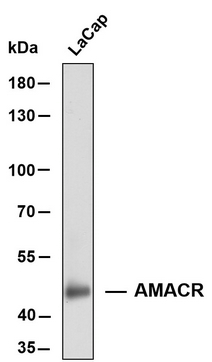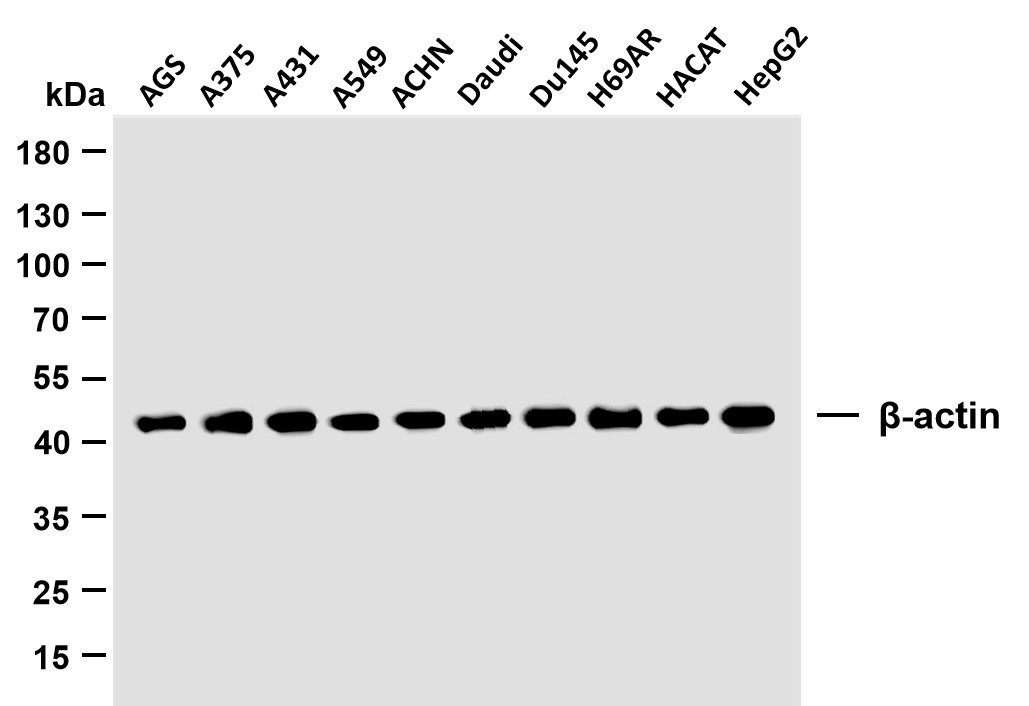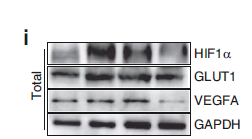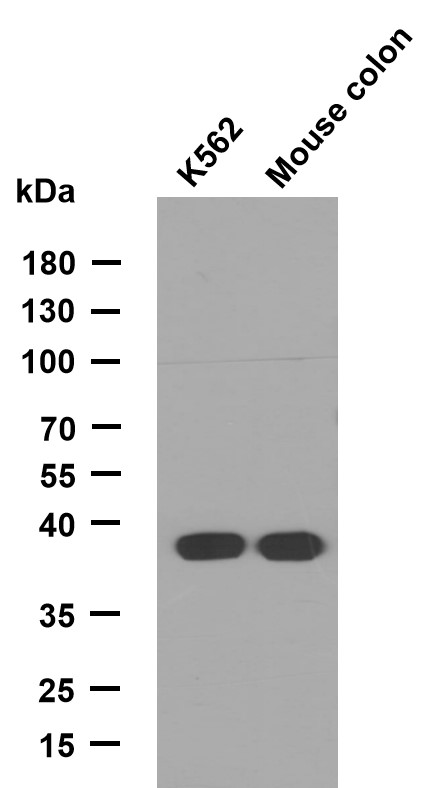AMACR (ABT-AMACR) mouse mAb
- Catalog No.:YM6658
- Applications:IHC;WB;ELISA
- Reactivity:Human
- Target:
- AMACR
- Fields:
- >>Primary bile acid biosynthesis;>>Metabolic pathways;>>Peroxisome
- Gene Name:
- AMACR
- Protein Name:
- AMACR
- Human Gene Id:
- 23600
- Human Swiss Prot No:
- Q9UHK6
- Immunogen:
- Synthesized peptide derived from human AMACR AA range: 300-382
- Specificity:
- This antibody detects endogenous levels of human AMACR. Heat-induced epitope retrieval (HIER) TRIS-EDTA of pH8.0 was highly recommended as antigen repair method in paraffin section
- Formulation:
- Liquid in PBS containing 50% glycerol, 0.5% BSA and 0.02% sodium azide.
- Source:
- Mouse, Monoclonal/IgG1, Kappa
- Dilution:
- IHC 1:200-400,WB 1:500-2000, ELISA 1:5000-20000
- Purification:
- The antibody was affinity-purified from mouse ascites by affinity-chromatography using specific immunogen.
- Storage Stability:
- -15°C to -25°C/1 year(Do not lower than -25°C)
- Molecular Weight(Da):
- 42kD
- Background:
- This gene encodes a racemase. The encoded enzyme interconverts pristanoyl-CoA and C27-bile acylCoAs between their (R)- and (S)-stereoisomers. The conversion to the (S)-stereoisomers is necessary for degradation of these substrates by peroxisomal beta-oxidation. Encoded proteins from this locus localize to both mitochondria and peroxisomes. Mutations in this gene may be associated with adult-onset sensorimotor neuropathy, pigmentary retinopathy, and adrenomyeloneuropathy due to defects in bile acid synthesis. Alternatively spliced transcript variants have been described. Read-through transcription also exists between this gene and the upstream neighboring C1QTNF3 (C1q and tumor necrosis factor related protein 3) gene. [provided by RefSeq, Mar 2011],
- Function:
- catalytic activity:(2S)-2-methylacyl-CoA = (2R)-2-methylacyl-CoA.,disease:Defects in AMACR are the cause of alpha-methylacyl-CoA racemase deficiency (AMACRD) [MIM:604489]. AMACRD results in elevated plasma concentrations of pristanic acid C27-bile-acid intermediates. It can be associated with polyneuropathy, retinitis pigmentosa, epilepsy.,disease:Defects in AMACR are the cause of congenital bile acid synthesis defect type 4 (CBAS4) [MIM:214950]; also known as cholestasis, intrahepatic, with defective conversion of trihydroxycoprostanic acid to cholic acid or trihydroxycoprostanic acid in bile. Clinical features include neonatal jaundice, intrahepatic cholestasis, bile duct deficiency and absence of cholic acid from bile.,function:Racemization of 2-methyl-branched fatty acid CoA esters. Responsible for the conversion of pristanoyl-CoA and C27-bile acyl-CoAs to their (S)-stereoisomers.,pa
- Subcellular Location:
- Peroxisome . Mitochondrion .
- Expression:
- Aorta,Brain,Cerebellum,Kidney,Liver,PCR rescued clones,Prostate cancer,Sali
- June 19-2018
- WESTERN IMMUNOBLOTTING PROTOCOL
- June 19-2018
- IMMUNOHISTOCHEMISTRY-PARAFFIN PROTOCOL
- June 19-2018
- IMMUNOFLUORESCENCE PROTOCOL
- September 08-2020
- FLOW-CYTOMEYRT-PROTOCOL
- May 20-2022
- Cell-Based ELISA│解您多样本WB检测之困扰
- July 13-2018
- CELL-BASED-ELISA-PROTOCOL-FOR-ACETYL-PROTEIN
- July 13-2018
- CELL-BASED-ELISA-PROTOCOL-FOR-PHOSPHO-PROTEIN
- July 13-2018
- Antibody-FAQs
- Products Images

- Whole cell lysates of LnCap were separated by 8% SDS-PAGE, and the membrane was blotted with anti-AMACR antibody. The HRP-conjugated anti-Mouse IgG antibody was used to detect the antibody. Predicted band size: 42 kDa
.jpg)
- Human prostate adenocarcinoma tissue was stained with anti-AMACR(ABT-AMACR) antibody.
.jpg)
- Human prostate adenocarcinoma tissue was stained with anti-AMACR(ABT-AMACR) antibody.



